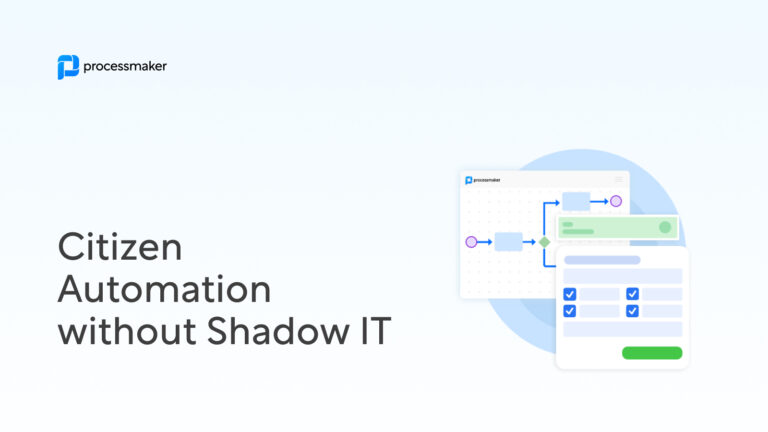In 2020, the pandemic drove E-Commerce to expand and offer more variations of products and services to give consumers options from the safety of their homes. Despite other restrictions, many E-commerce firms maintained operations. Yet, many consumers still think of E-Commerce as strictly retail items, books, and items you might get in a physical shopping mall. The scope has grown to other segments such as groceries, medicines, everyday necessities, and products catered to elderly care.
The shift from brick-and-mortar stores to E-Commerce occurred throughout every country. For instance, in the United States, E-Commerce sales grew 44% in 2020. According to the McKinsey Consumer Pulse survey, around three-quarters of respondents who used E-Commerce for the first time say they will continue to use these channels ever after the pandemic has subsided.
In addition, the pandemic accelerated the adoption of AI and automation. During uncertainty in the economy and the markets, businesses have typically adopted automation and reconfigured work processes to maintain resiliency and to control costs. Automation helps to reduce the number of jobs managing routine and rules-based tasks. McKinsey’s Future of Work research has found that over two-thirds of 800 globally-based senior executives said they were increasing investments in both AI and automation.
Many companies already employ automation in call centers, manufacturing, grocery stores, and warehouses to meet demand and also to mitigate crowded workplaces. The use of automation is certainly on the rise. In this piece, we will share our thoughts on automation trends in E-Commerce. Continue reading to learn more.
Why E-Commerce automation?
How can E-Commerce firms get ahead as the market becomes increasingly saturated? With automation. The issue is many times, automation platforms and tools are underused. In addition, some companies still rely on hiring more human resources to meet the gaps induced by manual tasks.
Iit is crucial to automate as many E-Commerce processes as possible to have more time to focus on the bottom line. Instead of worrying about manual activities, E-Commerce teams should spend more time improving the customer experience by using their strategic and creative abilities. If you are already paying too much time on repetitive and time-consuming processes, it’s a positive indicator to automate more of your activities.
Automation can help when it’s time to expand product lines or when it’s time to move growth ahead of your operational resources. Automation is the key to faster growth at a lower cost. When automated tasks are working 24/7, you have more time for higher-cognitive work and strategic initiatives.
Before the global pandemic, E-Commerce was another choice for making a purchase. After the pandemic, E-Commerce has become the main form of shopping. During 2020, many non-essential shops across the globe were closed. As a result, E-Commerce sales skyrocketed.
Shopping has changed forever, and over half of consumers in emerging and developed economies such as Brazil, China, Italy, the Russian Federation, Switzerland, and Turkey now shop online.
E-Commerce popularity post-pandemic
In a post-pandemic world, the significant shift towards E-Commerce will continue. As consumers feel safer shopping from their homes’ comfort, and they fear the potential for another health crisis, the behavioral patterns have changed. Also, many who have not previously understood the advantages of E-Commerce see it now; Deloitte offers the data to back this up. Even after the pandemic perils have dissipated, shoppers have come to embrace the convenience of E-Commerce.
Currently, E-Commerce is snowballing. Many new E-Commerce firms still struggle with finding the right tools to create a competitive consumer experience. One vital way to stand out is through automation. For instance, you can automate shipping and fulfillment to create fast and straightforward delivery. Humanizing brands is another trend and high priority among organizations who want to future-proof their digital businesses and thrive over the long term.
While a post-COVID-19 world is expected to recover more slowly than it did after the 2008–2009 global financial crisis, E-Commerce is the economic sweet spot as brands and consumers rush online. Nearly 150 million people shopped online for the first time in the pandemic, and the number of E-Commerce buyers will only continue to rise.
Even if the world’s economies recover slowly, E-Commerce offers the opportunity for business growth as shoppers continue to flock online. Consumers aren’t just buying clothing either; they’re buying health and home essentials too. COVID-19 has intensified the demand for instant gratification. Also, if customers are satisfied with their E-Commerce experience, it adds to this market’s permanency.
The future of E-Commerce lies in the ability for customers to buy any item or service of their choice and even try the products using virtual reality before making a purchase. Forbes has found that year-over-year growth in online shopping is up 68% between April 2019 and April 2020. Moreover, US and Canadian E-Commerce orders grew 129% between 2019 and 2020.
1. Co-created products and services
In the age of hyper-personalization, consumers want the ability to mix and match their services, design the packaging, and personalize their products.
The trend is to put E-Commerce automation of workflows on autopilot so team members can focus on offering self-service options. Using marketing automation helps to offload repetitive execution activities and campaign building. Inventory automation management ensures product stocks are updated in real-time with automated replenishment and data analytics on demand forecasting. Automating events facilitates automatically scheduling and post-sales, clearances, new product arrivals, and new bundles. Further, warehouse automation can create rules-based order routing to align products with orders in locations closest to the customer.
If E-Commerce operations start small, scaling implies adding more of everything. However, there is a breaking point after some time. As operations increase, so does the complexity. Doing more of the same repetitive and time-consuming tasks will cause burnout amongst employees. However, with E-Commerce automation, your employees can become more effective and more productive.
Automation increases the value output of the human resources you already have, so you don’t have to bring in more people to scale your operations. Besides, when staff gets to work on the tasks they were hired for, it increases employee engagement. As a result, customers can customize their products and services, and your personnel has more time for meaningful and authentic customer interactions.
2. Chatbots
Chatbots have been around for years, but the technologies behind these tools continue to advance. Also, chatbots are becoming increasingly mainstream and expected to become a permanent and common feature for E-Commerce sites. Chatbots will get better and more intelligent. According to Statista, expect the chatbot market to reach an estimated $1.25 billion in 2025 — a significant rise from $190.8 million in 2016.
Without question, the COVID-19 pandemic has provided the catalyst for understanding how essential automation has become for supporting our digital economy. It offers more resiliency, reliability, consistency, and opens the door for new opportunities not previously considered. E-Commerce will continue to grow, along with the automation that makes this market possible.
3. Novel experiences via headless architecture
There are times when people can experience technology fatigue. Indeed, technology helps to provide the structure for many of the systems we rely on, from hobbies to transportation to the Internet to entertainment. Still, many people crave human connection and interaction, so it is now considered a luxury.
As it relates to E-Commerce, the trend is that customers are becoming more loyal to brands that make their buyer’s journey feel more human and authentic with personalized experiences that set brands apart. From using automation to enable real-time behavioral analytics to deploying dynamic website content, the competitive edge comes in humanlike personalization. A headless and API-first architecture helps to separate the front-end customer experience from the back-end tech stack.
Benefits include the following:
- Omnichannel: Offer a personalized and brand-centric shopping experience throughout any device or platform.
- Agility: Complete control of the front-end experience as it is separated from the back-end.
- Integration: Use APIs to build a custom architecture with the tools most relevant to your service and product offerings.
All-encompassing omnichannel experiences are the trend, and this can be powered by automation. Not only can a headless architecture enhance conversion rates, but it also improves the customer experience.
4. Expanding the omnichannel
As mentioned above, customers want a consistent omnichannel experience across online marketplaces, social media, and other platforms. E-Commerce automation can help you build a technological support stack that enables your employees to create immersive and unique experiences on any platform. Not to mention, you can scale depending on consumer demand.
5. Synchronization of inventory, customer, and product data
Use automation to unify product and customer data views to ensure a consistent consumer experience on every channel. Using a single automation platform that can integrate with your current systems seamlessly means you can link workflows with data sources.
Automate syncing of product information such as SKU counts, prices, descriptions, and images in real-time via your omnichannel. As a result, your inventory stock and product data are always up to date.
When selling directly to consumers online, it’s essential to have enhanced visibility of your available inventory. Customers want immediacy, and continuous inaccuracies or substitutions harm the customer experience and the brand reputation. Accurate demand forecasting and supply chain management are challenging without the right tools. On the other hand, E-Commerce automation offers a solution using intelligent tools that provide real-time visibility.
Having E-Commerce associates scan and track pricing, product placement, and inventory puts your data at risk of errors, and it’s also time-consuming. Create operational efficiencies by using automation to collect and manage product-and-inventory-related data to trigger your subsequent and appropriate workflows. Employees will be more productive and waste less time searching through inventory, trying to locate products that customers want asap.
Customers equate E-Commerce shopping with speed, and their demands will only grow larger. Now is the time to use automation to reorganize your supply chain and fulfillment work processes to serve customers better and faster.
6. Integration of sales with supply data
The omnichannel strategy directly responds to the evolution of online purchasing, and it extends beyond the COVID-19 disruption. E-Commerce brands that don’t employ automation and centralized management of their sales processes will have a hard time tracking omnichannel performance. Further, you can use an automation platform to break down the silos between the sales and supply sides for improved collaboration and reporting.
7. Prescriptive analytics
Data is the new currency. Using real-time data improves a brand’s profitability and productivity. Therefore, access to prescriptive analytics can help create better customer experiences with data-driven decision-making in E-Commerce operations. Data-driven decisions may be the most crucial trend in E-Commerce automation for 2021 and beyond. To produce more value, team members will increasingly interact with automation. Utilize automation to continue improving your omnichannel, inventory, operational efficiencies, customer engagement, and employee productivity.
In conclusion
When you automate more E-Commerce activities, you expand your ability to increase your competitive advantage. When done thoughtfully, customers will notice the brands that use automation to offer a better experience. There are myriad ways you can automate your E-Commerce processes to free your employees to focus most of their time on your strategic objectives.
ProcessMaker is an intelligent low-code business process management suite (iBPMS) that helps E-Commerce firms across the globe automate their operations. The platform’s user-friendly, drag-and-drop functionality makes it easy for E-Commerce teams to design and deploy workflows without costly IT resources. Moreover, ProcessMaker empowers E-Commerce organizations to develop new applications and customize their infrastructure according to the unique needs of each product line and service.





